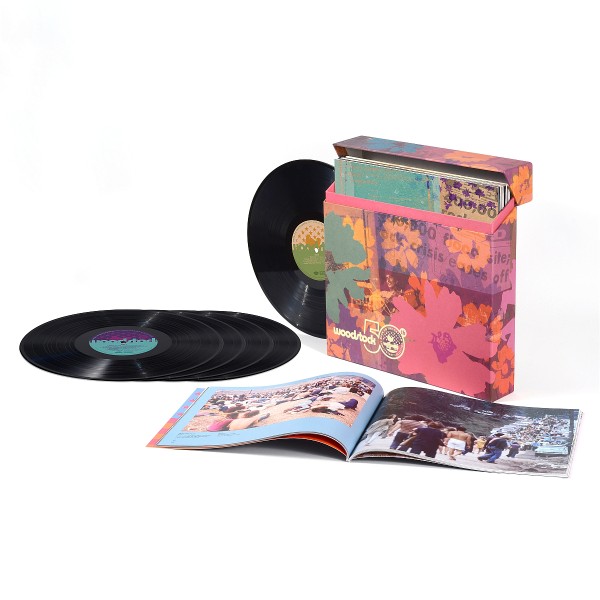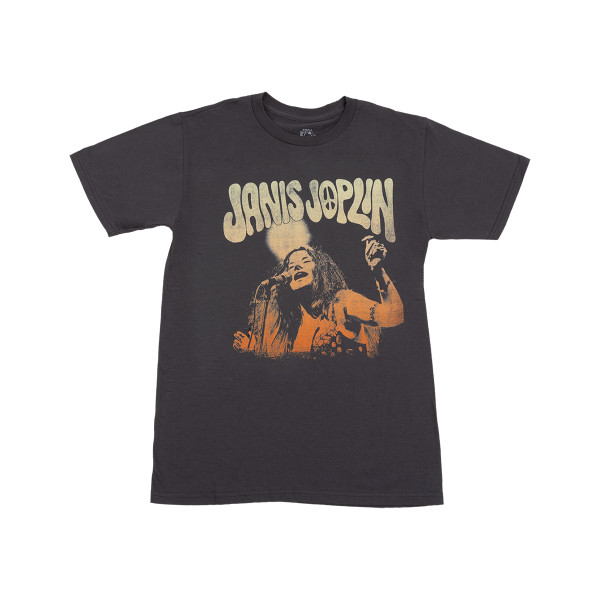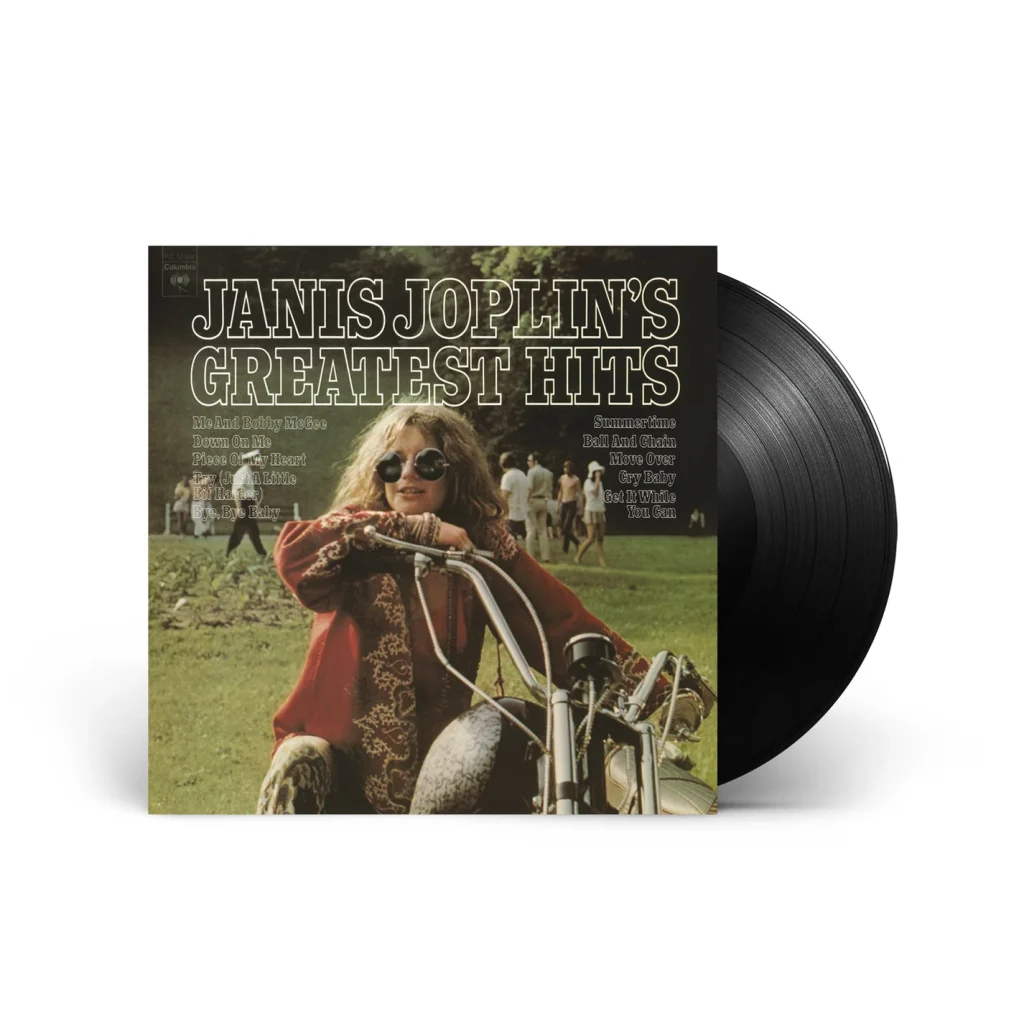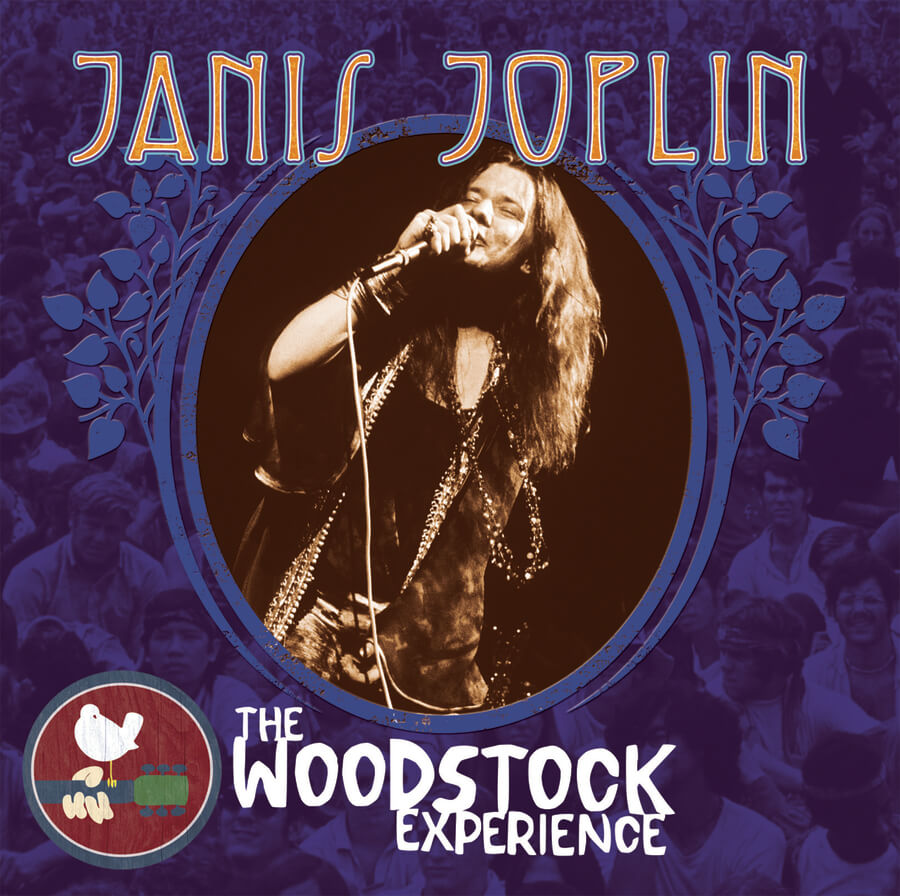WOODSTOCK1969
By Holly George-Warren
THREE DAYS OF PEACE, LOVE, AND MUSIC: the slogan of the groundbreaking Woodstock festival could not have been more enticing to Janis Joplin.
Indeed, she agreed to play the second – the biggest – day of the fest, August 16, 2024, for $15,000. But it was not about the money or the starring slot. For Janis, it was all about that communal gathering of likeminded souls that the festival represented.
When she arrived on August 15, 1969, to Bethel, New York, the site of the event, she brought her new group of musicians, recently dubbed the Kozmic Blues Band. Her first solo album, I Got Dem Ol’ Kozmic Blues Again Mama!, would be released a month later, in September. She’d played her last gig with Big Brother and the Holding Company the previous year, and after some personnel fluctuation, had settled on the musicians who’d back her at Woodstock. The previous year, guitarist Sam Andrew was the only Big Brother member whom she’d invited to be part of her new band, but they’d just parted ways. His replacement – Canadian John Till, formerly guitarist with Ronnie Hawkins’ band, the Hawks – was the sole guitarist onstage with her at Woodstock. It was his first Janis gig without Andrew.
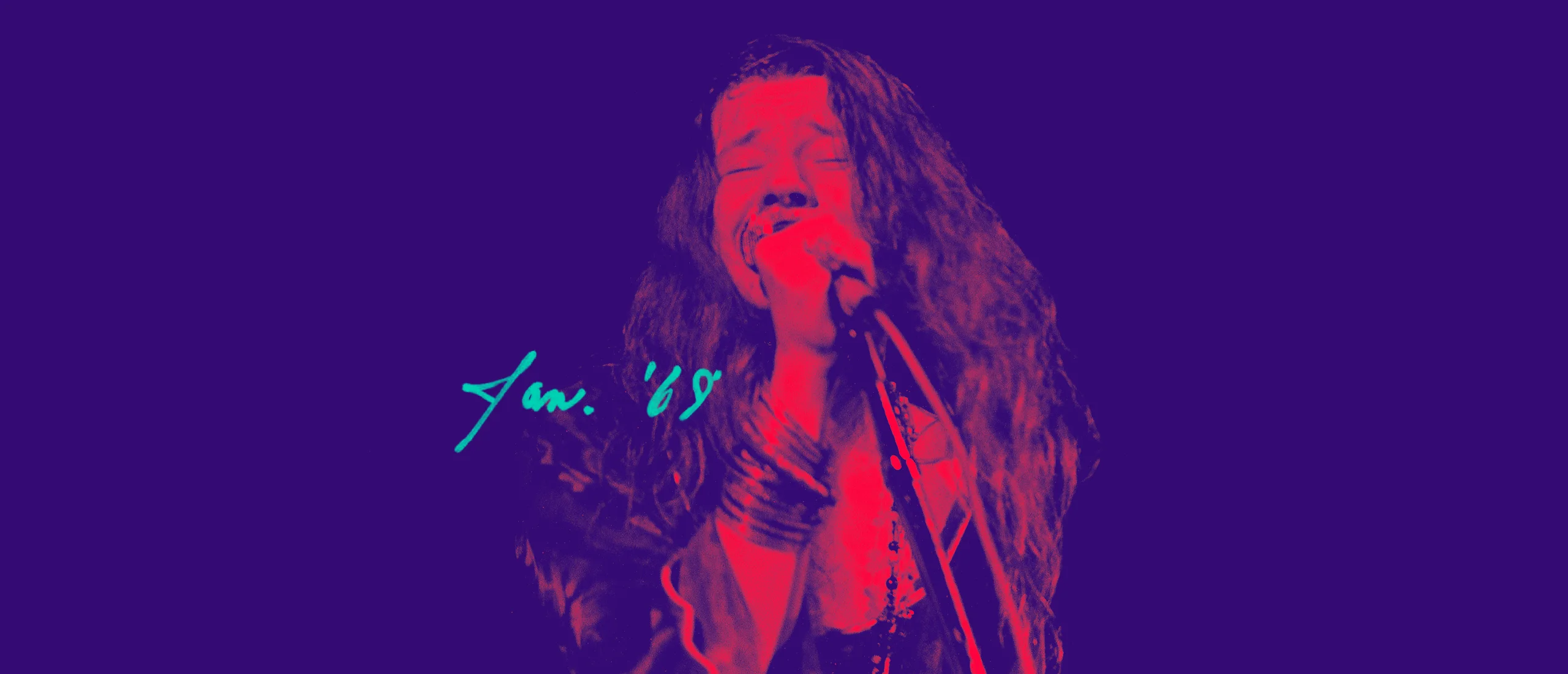
Other members of the seven-piece band had been with her longer. When she first formed the group in late 1968, she’d hired Canadian Brad Campbell, the bassist in the Albert Grossman-managed group the Paupers. Another early recruit was British-born Terry Clements, who’d played tenor sax with Electric Flag, and Richard Kermode, former keyboardist in a North Beach topless bar. In early 1969, Janis added baritone saxophonist Cornelius “Snooky” Flowers, who hailed from Leesville, Louisiana, and who’d gigged at the Fillmore with Johnny Tolbert & De Thangs (opening for Otis Redding) and worked with guitarist Mike Bloomfield. More recent additions were L.A.-based drummer Maury Baker and veteran trumpeter Luis Gasca, a sideman with Count Basie and Mongo Santamaria.
Janis reconnected with old friends at the bands’ hotel – the local Holiday Inn – including her San Francisco pals from the Grateful Dead and Jefferson Airplane, as well as Country Joe McDonald. Backstage at the festival site, she continued to party, flitting around and pouring champagne for all.
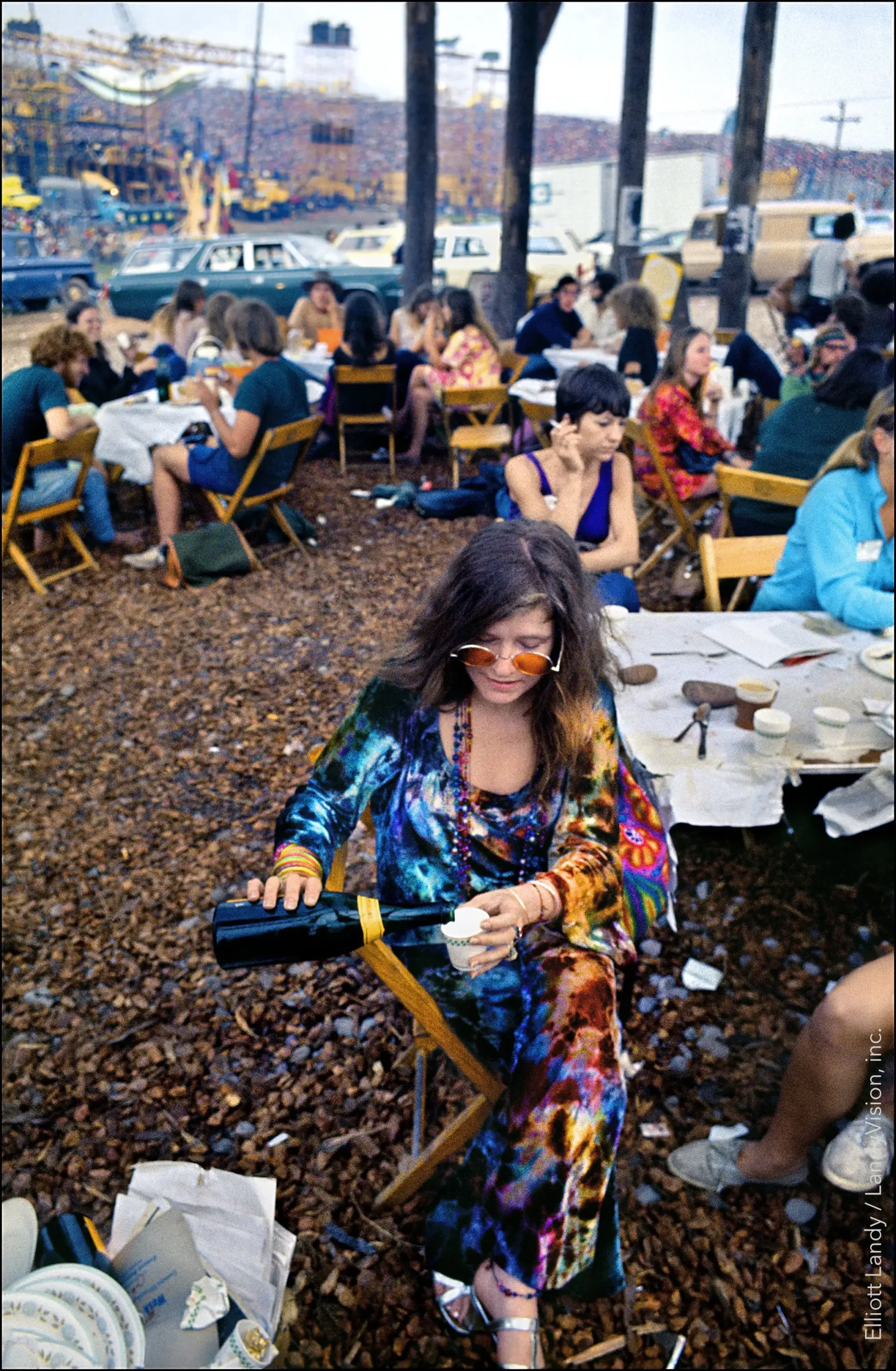
Janis Joplin at Woodstock ’69 © Elliot Landy
Rain delays and complications arising from the overwhelming crowd size completely threw off the performance schedule and caused technical problems. Just before midnight, on Saturday, August 16, the Grateful Dead played a disastrous set; their soundman Owsley Stanley rewired the P.A., which resulted in Bob Weir suffering electrical shock from a live mic. Next up was Creedence Clearwater Revival, who delivered a tight set.
By the time Janis and the band went on next, it was around 2:30 a.m. (officially Sunday morning, August 17). She was the eleventh artist to play the festival’s mainstage since sets began on Friday. She’d been awake for some 36 hours, and once onstage, the enormity of the noisy audience – though mostly shrouded in darkness – hit her. Her usual high energy built gradually on the opener “Raise Your Hand,” a song she’d killed on The Ed Sullivan Show in March (and a track on her forthcoming album). The gospel-tinged number, written by Stax recording artist Eddie Floyd (“Knock on Wood”), included a lengthy horn-section vamp followed by Till’s expressive guitar break, during which Janis boogied around the stage. Halfway through the five-and-a-half minute song, her adrenaline kicked into high gear and her voice strengthened as she implored the audience to “raise your hand!”
The band segued straight into another track recorded for her new album: Chicago bluesman Nick Gravenites’ “As Good as You’ve Been to This World.” Again, the song started with a lengthy instrumental showcasing the horn section, punctuated by a trumpet solo. Janis’ vocals didn’t appear until three-plus minutes into the tune, when she mesmerized the audience by alternately howling and intimately vocalizing. She was breathless when she introduced the number’s “really great songwriter” by name and told the audience its title, adding “that’s how good I’m gonna be to you!” (Fun fact: Old pal Gravenites had replaced Janis as lead singer of Big Brother and the Holding Company when she quit the band.)
Janis returned to her deeply felt ballad style with “To Love Somebody,” the 1967 Bee-Gees single that Barry Gibb originally intended for Janis’ hero Otis Redding (just prior to his tragic death in a plane crash). Janis had first performed it at the 1968 Stax Christmas concert in Memphis, and it would be a highlight of her forthcoming LP.
Janis wowed Woodstock by returning to her Big Brother repertoire via George Gershwin’s “Summertime,” a beloved track from Big Brother’s 1968 album Cheap Thrills. Janis had loved the Porgy and Bess number since her teen years, and Sam Andrew’s Bach-inspired opening guitar riff for the song was now interpreted by the Kozmic Blues horn section. Another new song followed: “Try (Just a Little Bit Harder),” a soulful number written by Jerry Ragovoy specifically for Janis. Ragovoy had co-written her first smash, “Piece of My Heart,” originally recorded by Erma Franklin. “Try” would be the biggest single on the Kozmic Blues album.
The next song was Janis’ stunning co-write, “Kozmic Blues,” which inspired the title of her upcoming album. Introducing it, she told the crowd, “Talking about the kozmic blues, if you don’t know what I mean, you will soon enough.” She let loose her trademark cackle, before launching into a magnificent version of her most personal – and gorgeous – ballad.
To elevate the mood, she then introduced the magnetic Snooky Flowers, handing him the mic and center stage. Flowers tried his best to win over the Janis-hungry crowd, and eventually did with his version of Otis Redding’s “Can’t Turn You Loose.” Throughout the festival, no other headliner gave such a spotlight to an unknown band member. With a big smile on her face and her feet bare, a joyous Janis let loose, dancing with and around Flowers, while sang with his Louisiana rasp. “Snooky Flowers! Yeah!!” she hollered, as the horns ended the song.
Returning to center stage, she generously introduced another song by the “fine songwriter Nick Gravenites”: “Work Me, Lord,” the perfect vehicle for Janis’ bluesy testifying. But after nearly an hour onstage, her voice failed her at one spot during the long, a cappella rap ‘n scat section near the song’s coda. “Work Me” was the longest song of the set, clocking in at more than eight-and-a-half minutes. What other artist would be brave enough to sing a cappella to a half-million people at 3:15 a.m. after being without sleep for close to 36 hours? And have the courage to choose fairly new songs to perform for an audience of that size? Until the encore numbers, the entire set was comprised of tracks from her forthcoming album, plus the spotlight on her Black saxophone player/vocalist – a rarity on that massive festival stage. The applause (recorded as Janis left the stage and her name was announced with endearment by Chip Monck) documents the explosive effect she had on the audience – who’d noticeably perked up about halfway through the set.
Of course, Janis returned to encore – fatigue be damned. She jumped into an up-tempo version of her first Number One smash, “Piece of My Heart” – her vocals completely resuscitated. “Music’s for grooving, man…not for putting yourself though changes,” she told the audience before asking them if they have “enough water” and are “staying stoned.” She pulled out all the stops for the final song of the evening – the one that had catapulted her to stardom when she’d performed it with Big Brother at Monterey just two years prior: her incomparable cover of Willie Mae “Big Mama” Thornton’s “Ball & Chain.” The new version featured the soulful horn section, as well as John Till’s impressive guitar solo. And Janis – whose heart had been broken dozens of times since she’d first sung the song as a newcomer from Texas – testified without accompaniment near the end of its seven-and-a-half-minute length. Drenched in sweat, but refusing to give up, she finished the one-hour-plus set around 3:30 a.m.
One audience member can be heard hollering, “Play all night!,” right before Janis launched into the set’s finale. Standing backstage and enthralled by what she’d just witnessed, pioneering rock journalist Ellen Sanders later wrote: “Janis Joplin danced with them as if they were one. They shouted back at her, they wouldn’t let her off until they’d drained off every drop of her energy.”
